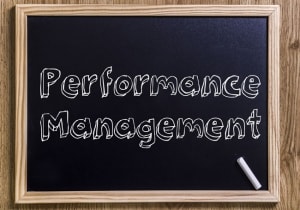The service is excellent, the 360 feedback team are knowledgeable, friendly and courteous. They really understand the project timelines I work on and offer advice to make things run smoothly. I have been using them for around 10 years in different...


 Although the word crisis might seem hyperbolic, evidence points to a worrying state of affairs in many organisations. Oxford Economics published a
Although the word crisis might seem hyperbolic, evidence points to a worrying state of affairs in many organisations. Oxford Economics published a 

 Performance in the workplace is tough to assess. Too often, bosses hold onto vague judgements about how “hard working” or “enthusiastic” an employee is, or how good they are at “leadership”.In this warped world of subjective judgement, anecdotes make the evidence. Start scraping away at strongly held beliefs that bosses have about staff and often their reasons for thinking about people in a certain way is tenuous: “the person is busily beavering away when I pass their desk in the office” is somehow evidence of their conscientiousness. “They were very quiet during the last couple of team meetings” is incontrovertible proof that they lack energy. Perhaps we do this out of habit. After all, when we meet new people in a social environment our instincts and early interactions with them help us make a decision about the kind of person they are.
Performance in the workplace is tough to assess. Too often, bosses hold onto vague judgements about how “hard working” or “enthusiastic” an employee is, or how good they are at “leadership”.In this warped world of subjective judgement, anecdotes make the evidence. Start scraping away at strongly held beliefs that bosses have about staff and often their reasons for thinking about people in a certain way is tenuous: “the person is busily beavering away when I pass their desk in the office” is somehow evidence of their conscientiousness. “They were very quiet during the last couple of team meetings” is incontrovertible proof that they lack energy. Perhaps we do this out of habit. After all, when we meet new people in a social environment our instincts and early interactions with them help us make a decision about the kind of person they are. Performance management is a task dreaded by many and performed well by few. The good news is that there are a selection of very common pitfalls. If you identify these and conscientiously avoid them, then you are already ahead of the game. Here are three common errors and how to avoid them:
Performance management is a task dreaded by many and performed well by few. The good news is that there are a selection of very common pitfalls. If you identify these and conscientiously avoid them, then you are already ahead of the game. Here are three common errors and how to avoid them:


 Mens sana in corpore sano: “a healthy mind in a healthy body”. We’ve learned to think about the workplace in similar terms: a happy, efficient worker is the key to an organisation that is similarly sound. Little wonder then that so many companies now prioritise employee engagement as a fundamental factor influencing how the firm performs.
Mens sana in corpore sano: “a healthy mind in a healthy body”. We’ve learned to think about the workplace in similar terms: a happy, efficient worker is the key to an organisation that is similarly sound. Little wonder then that so many companies now prioritise employee engagement as a fundamental factor influencing how the firm performs.